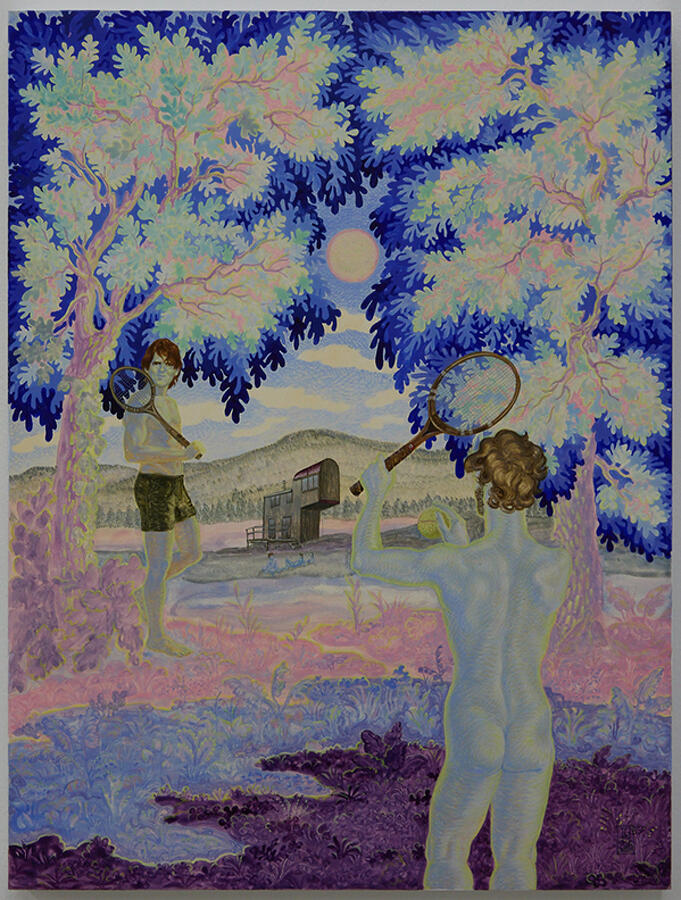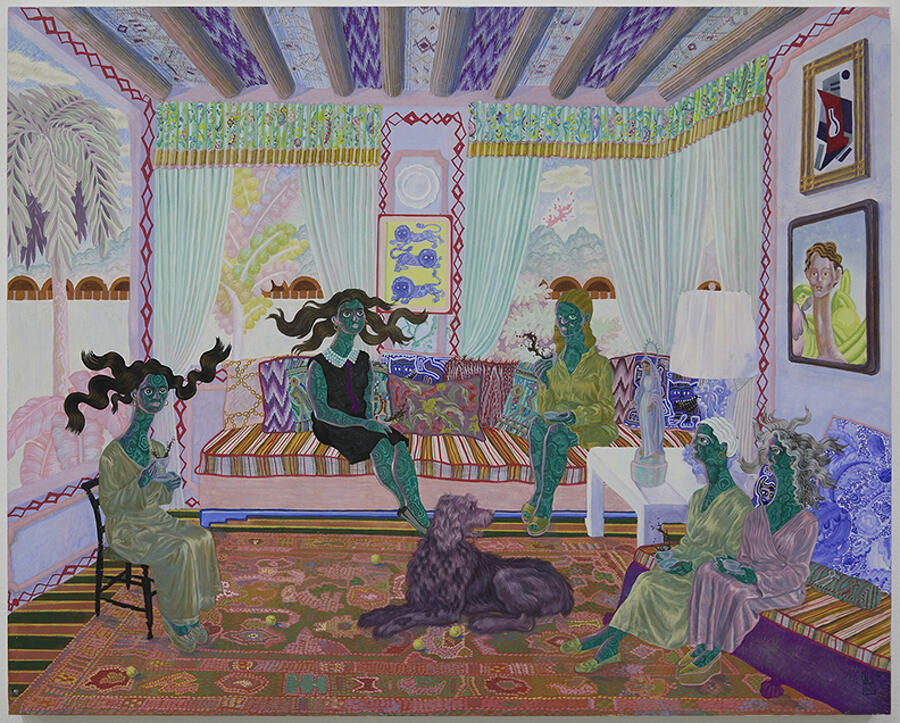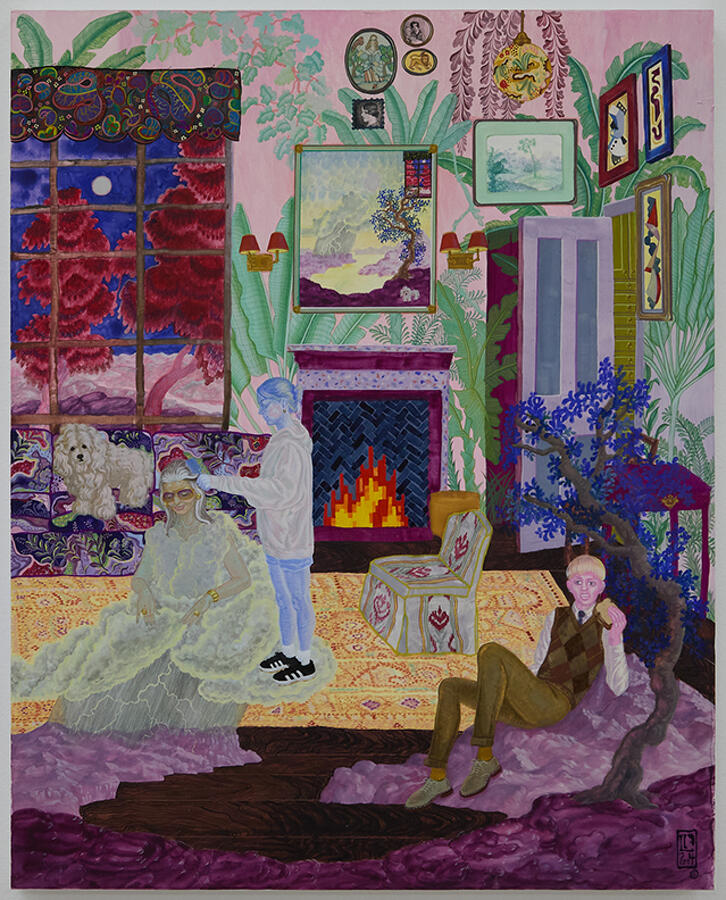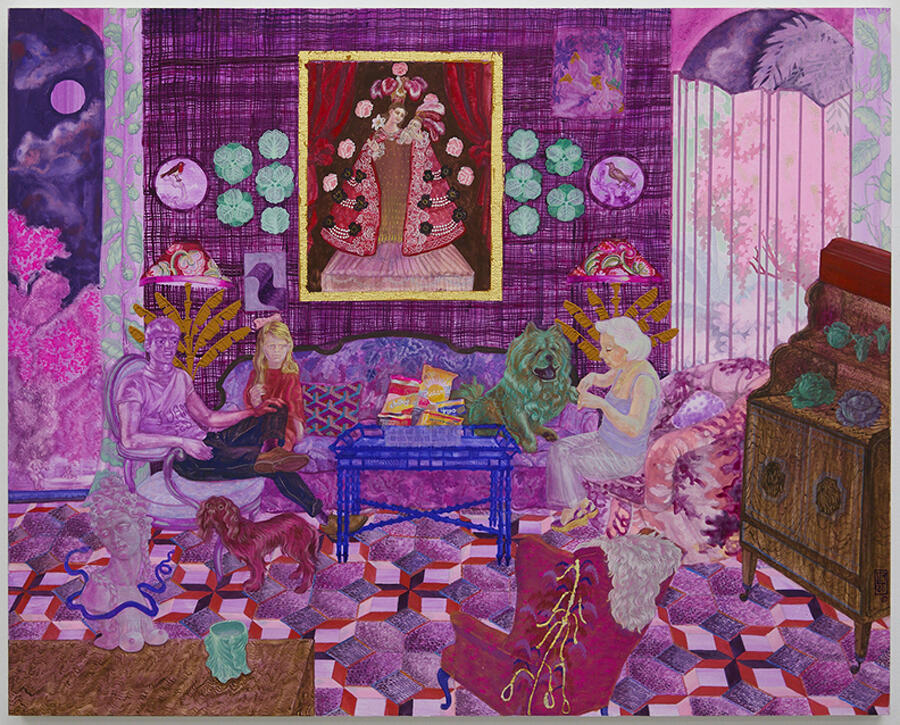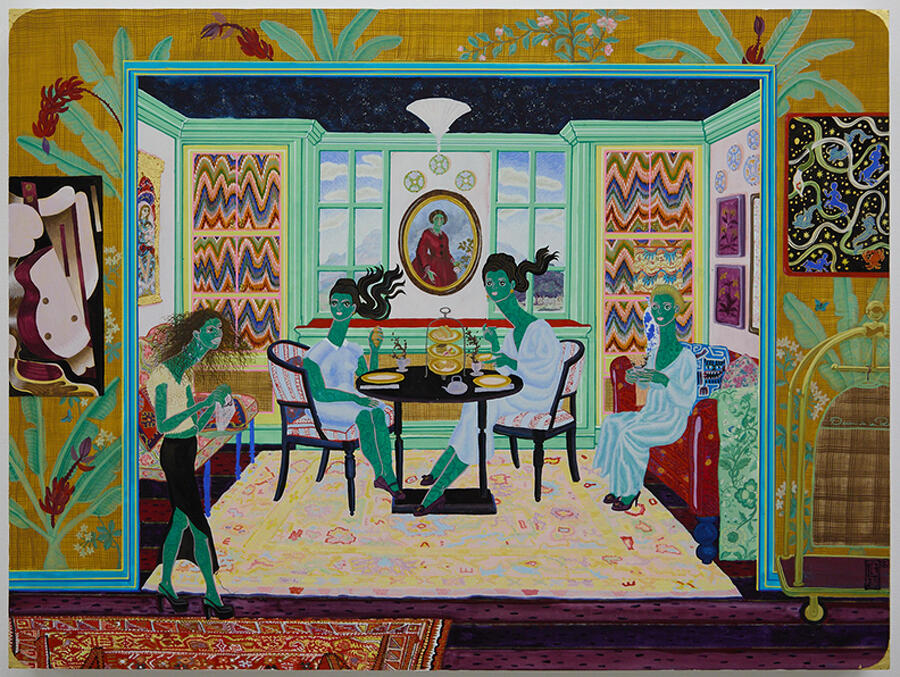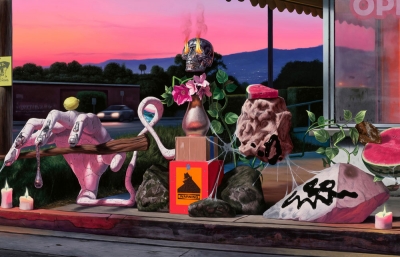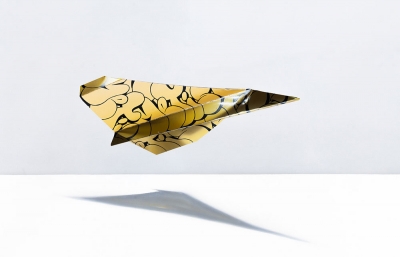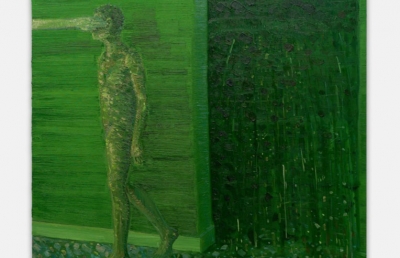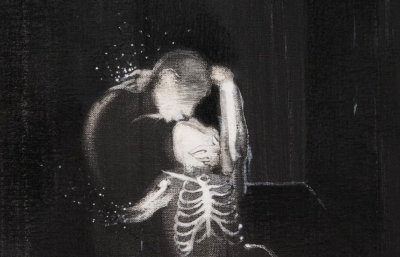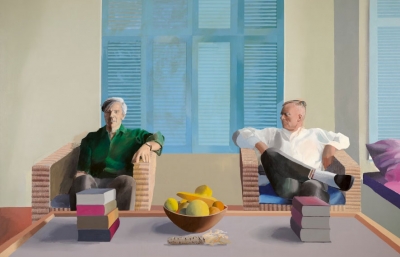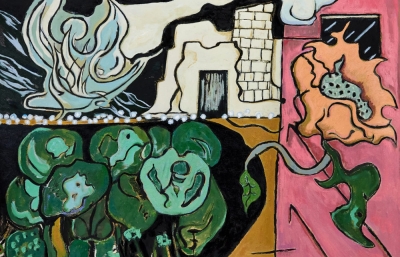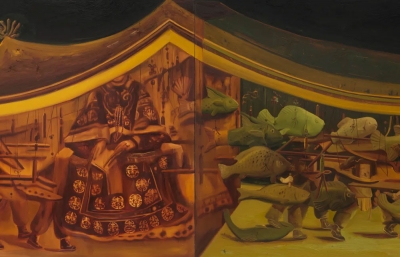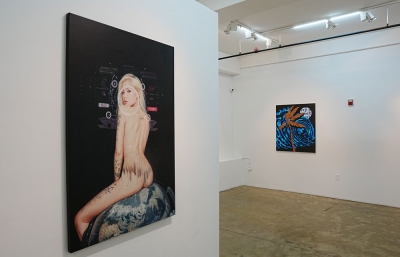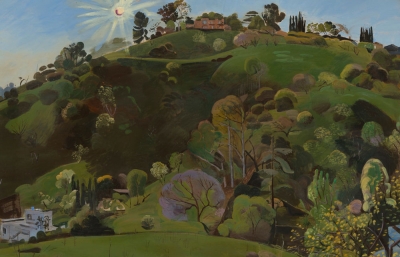Monya Rowe Gallery is pleased to announce a solo exhibition of new paintings by Larissa Bates titled Outside/Inside. Bates’ paintings envision imagined interiors and landscapes stemming from her own childhood and the lives of extended family members. The exhibition explores how our homes and cultures shape us as well as how spaces are created to reflect who we are, or how we want to be perceived.
In these works, Bates looks to her complex family background for inspiration. She was raised by an American father after losing her Costa Rican mother in infancy. The title, Outside/Inside, refers both to the external landscape that permeated her home growing up, having lived off the grid in the cloud forest of Costa Rica and rural Vermont, as well as the psychological experience of returning to her mother’s family as a gringa from the States. Her grandmother wanted to raise her in Costa Rica, and a sense of this twin self who would have had an entirely different orientation—a mystical Catholicism in place of a radical secularism--persists in her imagination.
For most of her upbringing, Bates and her father lived off-the-grid in a remote area of Vermont where he was part of an artistic community on Prickly Mountain comprised of artists and recent Yale architecture school graduates who built each other’s homes. This later formed the Design Build movement, and is sometimes called improvisational architecture. Bates didn’t have electricity, drawing light only from oil lanterns and candles. The only water was unheated and drawn directly from a nearby stream; wild animals would sometimes come out of the house’s stone walls. This was the product of a community whose foundation was in the belief of creating together. It was in sharp contrast to the much more traditional East coast world her father came from. Members of the Prickly Mountain community all grew up in similarly patrician homes of the 1940’s and 1950’s and sought to create something different, and experimental. A bubbling under-current of formality persisted beneath the surface. Psychedelics, experimental art, and nude tennis contrasted with communal singing of WASPY hymns from prep school days and hand-me-down monogrammed silverware.
The interiors in this exhibition are rooted in the surreal spaces created by the architecture of Prickly Mountain intertwined with imagined spaces and depictions of Bates’ mother’s world through fragments of memory. The objects and interiors allow Bates to form a spiritual dialogue with her mother in a space of an invented history. Through autobiographical narratives and surreallism, Bates explores identity, maternal mortality and the loss of ones’ culture, and possibility of imaginative expression interiors offer.
Bates’s paintings not only emanate maternal longing, but also a longing and a curiosity about objects, particularly the decorative, in opposition to her father’s philosophy of anti-materialism. The artist incorporates grief and daydreaming to illuminate a layered and complex interior life all with rich and varied meanings.
The central characters in Bates’ work are based on friends, family members and fictitious amalgamations. Malachite Tías and Primas (2024-2025) depicts a gathering of women in a maximalist interior with an ominous atmosphere. The dog seems worried, the women’s exaggerated hair appears to be flying in the wind as if taken over by a supernatural occurance, and the coffee is spilling out of the cups mirroring the volcanic eruption seen just outside the window. Bates’ work often explores the unknown and unanswerred. Interiors and the idea of home are used to represent ones’ own complex interiority. Her influences range from Jared French, Paul Cadmus, Leonora Carrington, Gertrude Abercrombie and Remedios Varo, to Josef and Anna Frank’s textiles. Combining these varied influences with personal and universal themes is reflected in Bates’ idiosynchartic paintings.



